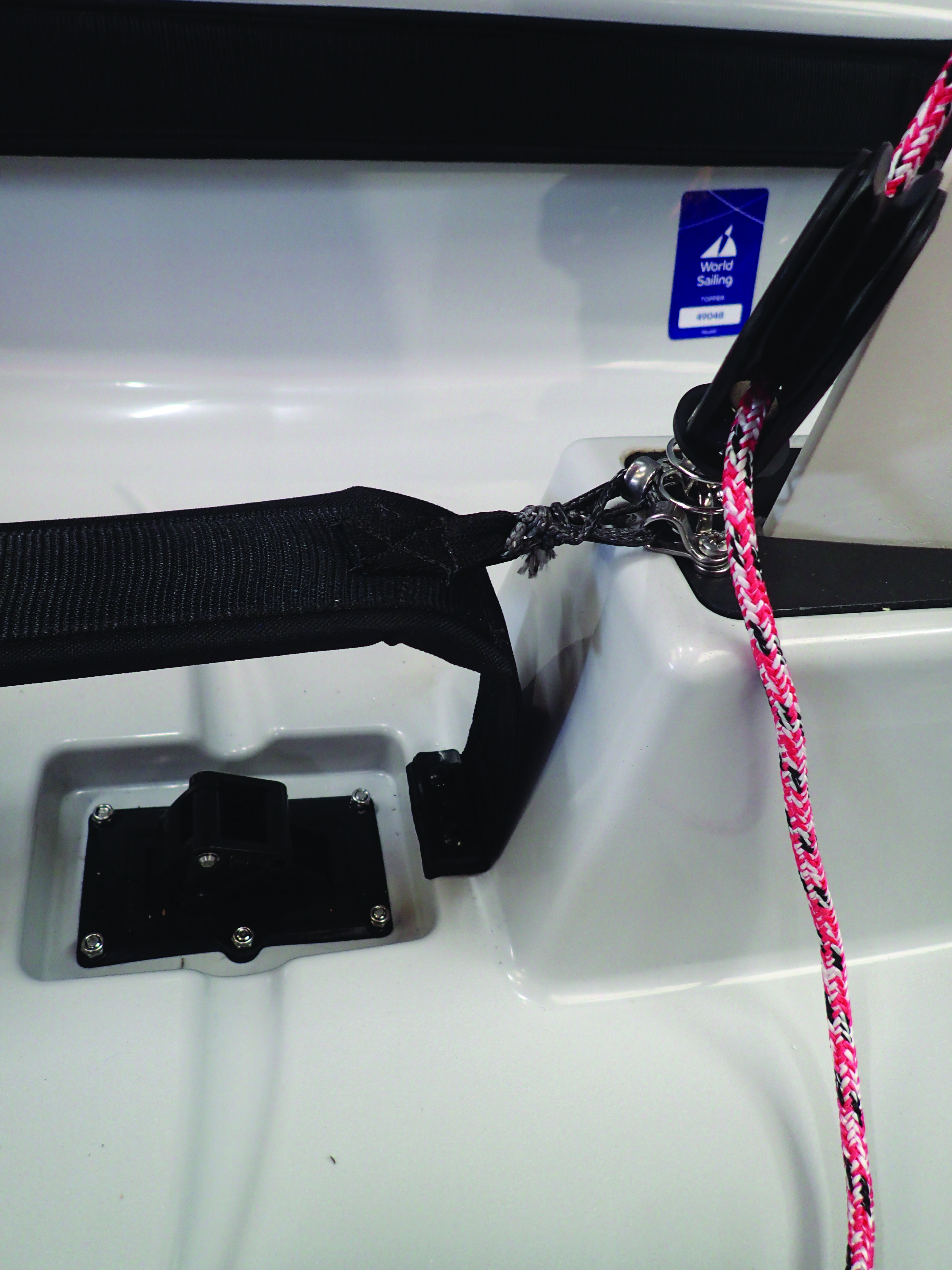Preparing Your Topper For Success
Book Extract
Finding The Right Boat
There are nearly 50,000 Toppers out there somewhere so finding one should not be too difficult. Finding a boat suitable for racing is more of an issue. All the injection-moulded (red or blue) Toppers ever made came out of the same mould so they should all be the same and they are pretty well indestructible. Alternatively look for a boat used as a race boat and it will come with race controls and be well looked after.
Perhaps the best boats are ones left in a boat park for years and years. The grass may be growing around them but a quick power-wash and they will look (almost) as good as new.
What To Look Out For
Check that the mast cup, at the base of the mast, is not worn through and that the transom plate bolts can be fully tightened. Make sure the spars are straight and the sail has some service left in it.
All spares are available and there is not a lot to go wrong in truth. Hulls and decks can be welded and leaks can always be stopped.
Check that the hull is not too scratched or distorted.
Maintaining & Preparing Your Boat
General Maintenance
Maintenance is straightforward and a little time spent brings a lot of rewards:
- Tighten all screws but be careful not to overtighten
- Clean an injection-moulded (red or blue) hull with bathroom cleaner and a plastic scouring pad. Deep scratches can be improved with ‘wet and dry’ glass-paper
- Hose down with fresh water (especially the mast step) if sailing on the sea to slow down corrosion and to maintain the performance of the moving parts
- The rivets on the mast and boom are stainless steel or monel. Check regularly and, if necessary, replace them
If water is getting into the watertight hull, check the areas listed below by pumping the boat up a little (lung pressure will do) and applying washing up liquid and water to:
- The self-bailer: This is best removed and re-bedded with Sikaflex or silicon sealant. There is a gasket between the deck and the hull in this area that can also be replaced with Sikaflex
- The transom plate: The captive nut on the inside plate can become detached preventing the bolts being tightened. Replacement of this nut is difficult (but not impossible) because hatches are not allowed under class rules for injection-moulded (red) boats
- The mast cup at the foot of the mast has a bolt that pulls the hull and deck together. This cup should be replaced occasionally to prevent damage to the deck as it wears away. Behind it there is also a seal that may need replacing
- The bung should be sealed and possibly replaced
- The seal at the top of the daggerboard case: Sikaflex and the use of negative pressure in the hull, using a vacuum cleaner, will cure this!
It is rare to find that deck-to-hull seals leak but they can.
Hull
Injection-moulded (red) Toppers were made of polypropylene and this must be taken into account. They are often mistreated by non-racers because they are so difficult to destroy! Racers need to take special care.
Hulls must be stored upside down or they take on a ‘set’ (wavy hulls are not fast!). Scratches are difficult to remove from the hull and oh so easy to put in!
You can scrape them out but I prefer using a sharp blade as a scraper followed by ‘wet and dry’ sandpaper, starting with a rough grade and finishing off with 1000-grade and plenty of water.
A good quality trolley that supports the hull in the right places is essential. A high handle position on the trolley will save your back as well as the transom of the boat.
Other tips with injection-moulded (red) hulls:
- Bed down the hull plate by removing the top of the inserts
- Tape the join between hull plate and hull with 5cm (2in) waterproof tape
- Tape the head of the mast cup screw
- Check the positioning of the foam block in the rear tank
Rota-moulded (grey) Toppers are made from polyethylene which is very strong but can be scratched, so make sure you use a trolley and don’t put the hull directly on anything hard. Hull repairs should be undertaken by someone qualified with the relevant skills and equipment.
Toestraps
The outer toestraps should be as tight as possible to keep them out of the way. Pad the central toestrap for comfort and grip. Use elastic at the back of the cockpit to hold the centre toestrap up and the outer toestraps out (see p136-137 for how to fit this). Also use elastic at the front of the central toestrap.

Elastic to hold the back of the central toestrap up and the outer toestraps out

Elastic to hold the front of the central toestrap up